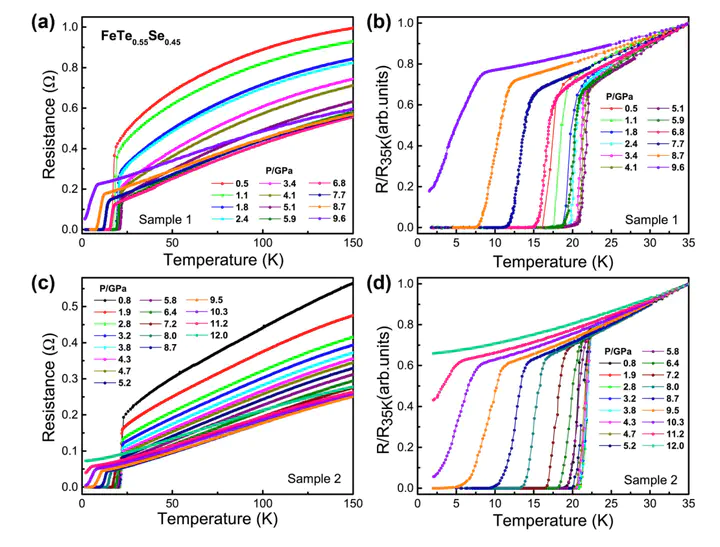Correlation between Fermi surface reconstruction and superconductivity in pressurized FeTe0.55Se0.45

摘要
Here we report the results of the high-pressure Hall coefficient (RH ) measurements, combined with the high-pressure resistance measurements, at different temperatures on the putative topological superconductor FeTe0.55Se0.45. We find the intimate correlation of sign change of RH , a fingerprint to manifest the reconstruction of Fermi surface, with structural phase transition and superconductivity. Below the critical pressure (Pc) of 2.7 GPa, our data reveal that the hole-electron carriers are thermally balanced (RH = 0) at a critical temperature (T ∗), where RH changes its sign from positive to negative, and concurrently a tetragonal-orthorhombic phase transition takes place. Within the pressure range from ambient pressure to Pc, T ∗ is continuously suppressed by pressure, while Tc increases monotonically. At about Pc, T ∗ is undetectable and Tc reaches a maximum value. Moreover, a pressure-induced sign change of RH is found at ∼Pc where the orthorhombic-monoclinic phase transition occurs. With further compression, Tc decreases and disappears at ∼ 12 GPa. The correlation among the electron-hole balance, crystal structure, and superconductivity found in the pressurized FeTe0.55Se0.45 implies that its nontrivial superconductivity is closely associated with its exotic normal state resulting from the interplay between the reconstruction of the Fermi surface and the change of the structural lattice.